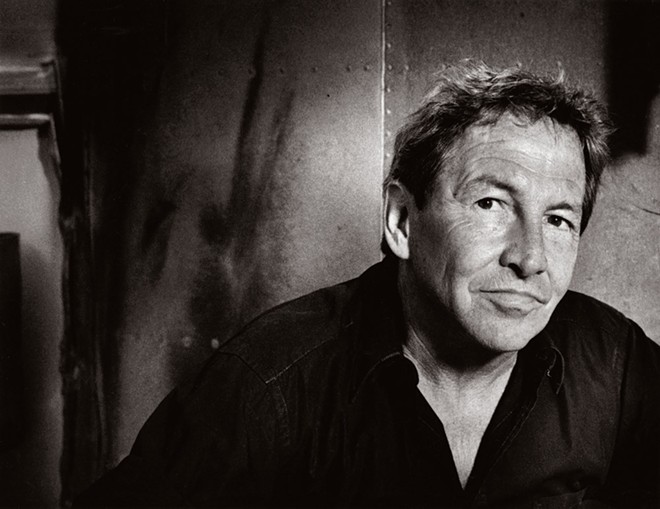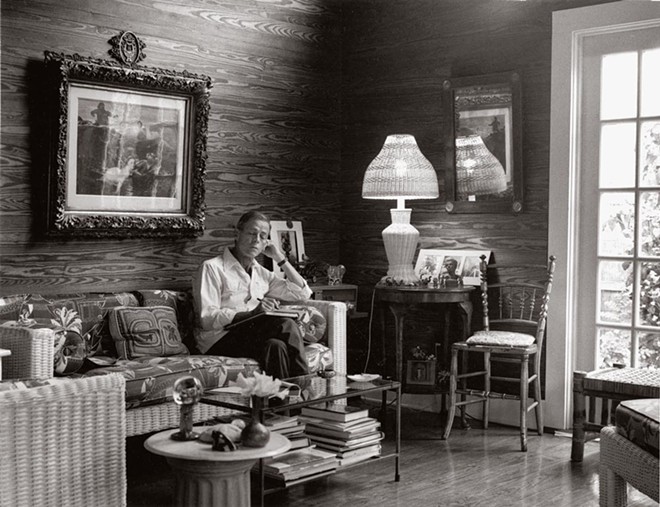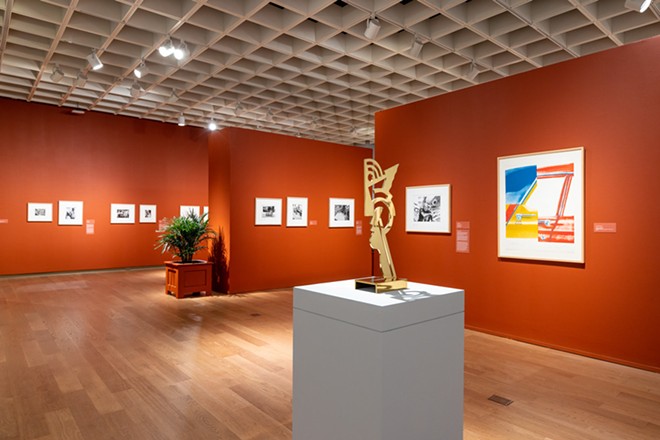In 2012, the Orlando Museum of Art presented an exhibition of Orlando photographer Jimm Roberts' portraits of writers and artists in Florida — some Sunshine State natives, some longtime snowbirds — and I reviewed it then. It was part of a refreshing yearlong celebration of Florida at OMA, which culminated in the inaugural Florida Prize in Contemporary Art, the annual invitational launched in 2013. Since the exhibition has returned to the museum, 10 years later, we thought we'd revisit our original review.

In 1941, Miami-based photographer Arnold Newman, later to become one of America's pre-eminent portrait photographers, took his first "environmental portraits": that is, he packed up his equipment and met his subjects in their natural surroundings rather than having them come to his studio. In 1945, his show Artists Look Like This opened at the Philadelphia Museum of Art, cementing the concept.
Jimm Roberts' idea to shoot 50 Floridian writers and artists is a direct descendant of this exhibition, but one in which the environment is an equal participant. Not only are his subjects quite often shown among the "tools of their trades" — writers posed with pencils, notebooks, typewriters, word processors, bookcases; painters and sculptors posed in their studios and/or surrounded by their art — but Florida is itself always present, represented by palm fronds or other flora, by jaunty rattan furniture or simply by nova-bright sunlight, straining through a roller shade or pouring in unabashed to brighten a shy writer's face.
Roberts, who lives and works in a peach-painted, pocket-sized Key Westian building (complete with wrought-iron balcony and walled garden) on North Orange Avenue, says: "In 1983, I was surprised to discover how many internationally noted artists, authors, poets and playwrights were then living and working in Florida," in the afterword of the book Southernmost Art and Literary Portraits, which came out after the original 1989 exhibition and from which much of this OMA exhibition is drawn.
"Why had no one ever portrayed the artists and writers of their time who had migrated to this sub-tropic scratch-mark on the globe?"
And so Roberts set about doing that, tracking and capturing his prizes with the single-mindedness of a birder. Roberts shot and printed portraits of a who's who of '80s-'90s arts and letters: legends such as Marjory Stoneman Douglas, Edward Albee and John Knowles; tough guys like Harry Crews, Robert Stone, Charles Willeford and Elmore Leonard; literary prom queens including Ann Beattie, Annie Dillard and Joy Williams; Pop Art wünderkinder Robert Rauschenberg and Roy Lichtenstein.

The museum's curatorial staff enriches Roberts' Southernmost Art and Literary Portraits by including pieces from OMA's permanent collection made by the artists portrayed in the photos, as well as other ephemera like letters and contact sheets. The inclusions give texture and color to the gallery, creating another way in for viewers who find the large-format black-and-white photos austere.
What saves this show from being merely a deck of cultural baseball cards is Roberts' reverence for his subjects, which illuminates each image. Art is thought to be invariably a product of ego, but Roberts is absent from these images; he often allowed his subjects to choose their settings, their props, patiently waiting for the decisive moment when personality peeped through the carefully groomed version of reality seemingly constructed by each sitter. That moment doesn't always come — a few of the images are stilted — but when it does, it's a knockout, as in a close-up of painter Jules Olitski in which a startling, sly intelligence blazes forth.
It's always difficult to observe an observer, anyway; they don't give much away. As Gertrude Stein pointed out in What Are Masterpieces, "I have always noticed that in portraits of really great writers the mouth is always firmly closed."





